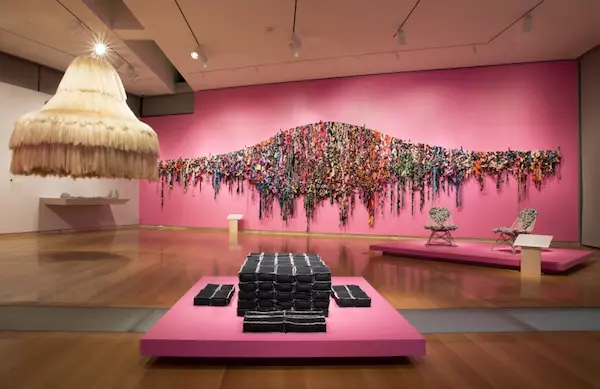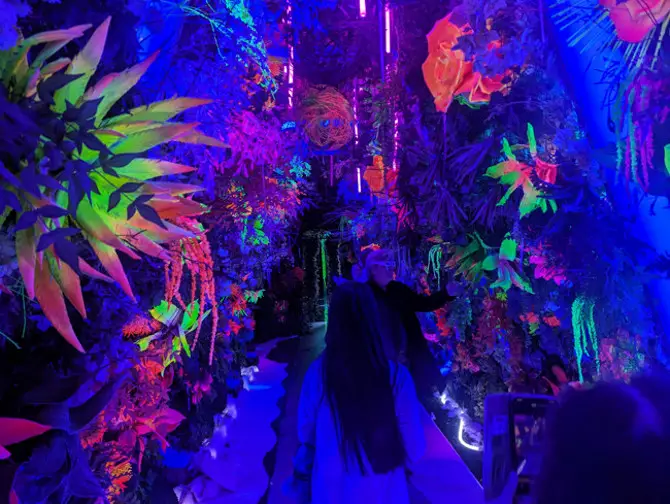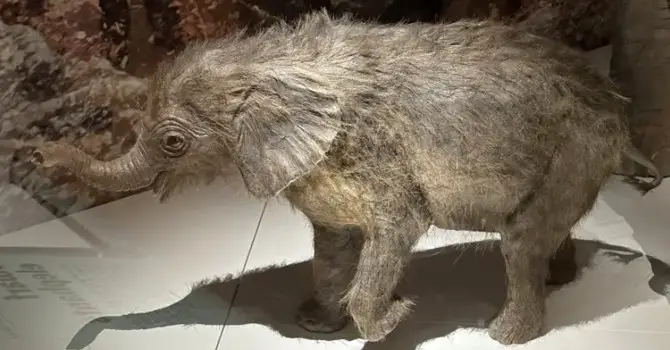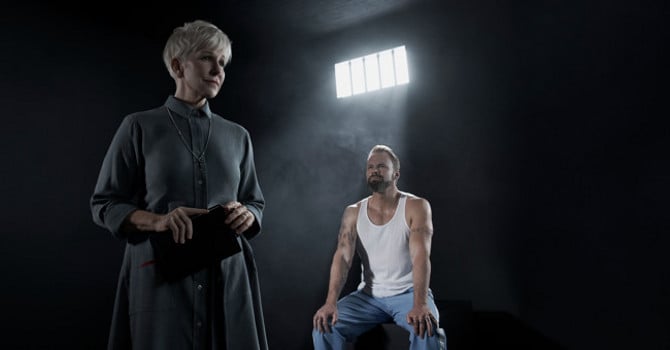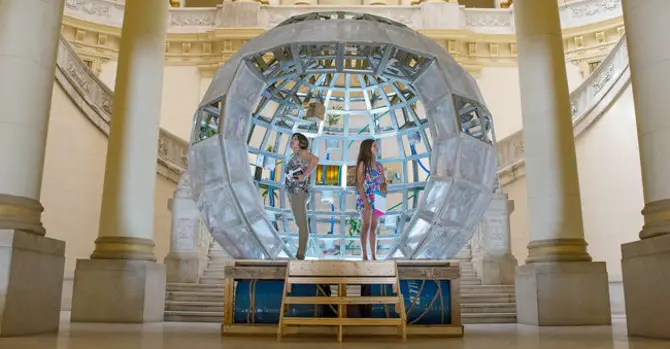It’s no secret that tensions between the U.S. and Mexico have reached a near-breaking point. Community activists throughout the States are advocating for civility and dignity toward immigrants and working for a culture of peace along a troubled border. One of those activists has been working quietly for many years, using art to tell a dense and fascinating border story.
Her name is Tanya Aguiñiga, and her Craft & Care is on view now at the Museum of Arts and Design (MAD) near Columbus Circle. Come see Aguiñiga’s giant fringed umbrella, tapestries of knots made by commuters traveling the border, and other pieces made through community partnerships on both sides of the U.S./Mexico divide. Aguiñiga is a United States Artists Target Fellow in Crafts and Traditional Arts and has appeared on the PBS program Craft in America. Craft & Care is Aguiñiga’s first solo exhibition in an art institution.
Installation view of Tanya Aguiñiga: Craft & Care. Photo by Jenna Bascom. Courtesy of the Museum of Arts and Design.
As a native of Tijuana, Aguiñiga used to cross from the U.S. to Mexico and back daily, traveling to San Diego for school. She experienced the liminality of dual cultural and national identities firsthand. Later, Aguiñiga’s “design thinking” approach, in which she uses the concepts of aesthetic design to solve practical problems, led her to create the AMBOS Project. AMBOS (“Art Made Between Opposite Sides”) forms community crafting projects and storytelling events, drawing from people on both sides of the border.
The pieces on display at MAD are the products of these dialogues, including photographic documentation of AMBOS projects, artifacts, audio clips, and, of course, decorative art. The Border Quipu/Quipo Fronterizo, for example, is a piece that hangs from the ceiling in several columns of knots. The piece was formed between 2016 and 2018, when AMBOS offered commuters two strands of thread and asked them, “What are your thoughts when you cross this border?” The knots the commuters tied are called quipu, a mathematical technique employed by the Incan people. The multicolored quipu hang together from the ceiling in long fringes. Some of the commuters’ responses, documented in Spanish and English, are also on display.
The loose, bowed horizon of fabric fragments also in the gallery is CRAFTA Weave (2015). Named in reference to NAFTA (the North American Free Trade Agreement), the deconstructed Mexican blankets aim to criticize the agreement’s policies that have disempowered Mexican craftspeople.
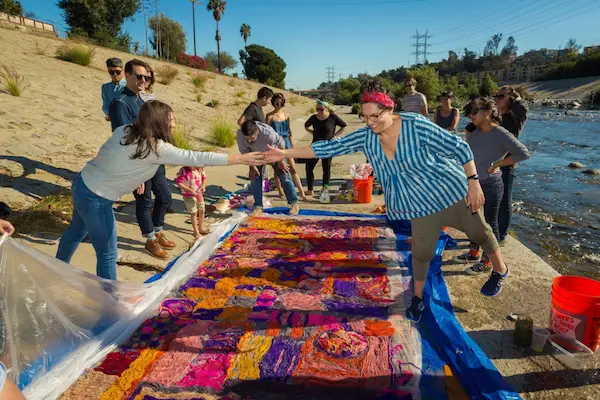
Performance Crafting, Community Felt-In, 2014. 6ft high x 48 ft long. Courtesy of the artist.
Another innovative technique Aguiñiga employs is community crafting, in which many participants form a single design project. In 2015, Aguiñiga used wet felting, in which the felter kneads wool with soap and water, to connect the border community with a literal hands-on experience. Participants sat in a line and pressed wet felt along the hand of the person in front of them, forming a chain of intimately involved crafting. These felted hand sculptures—personalized gloves!—make up Hand in Hand, on view in the exhibit.
Another project involving intimacy and identity, the artist had her body wet-felted during a performance in Los Angeles. Felt Me (2013), the suit made from viewers who pressed Aguiñiga’s body with wet felt, is on view as well.
The distinctive white, hairy canopy in the gallery is called Palapa. Aguiñiga invites visitors to stand underneath this umbrella made of powder-coated steel and synthetic hair, either alone or with a friend. You can also see (but not sit on) Aguiñiga’s furniture, including Low Rod Chair and Support, the latter of which is a modular bench filled with rice and salt, a comment on how goods change value over time.
While at MAD, be sure to check out Surface/Depth, a colorful collection of collages, and La Frontera, with jewelry designs that also explore border relations.
The Museum of Arts and Design is located at 2 Columbus Circle. Call 212-299-7777 or visit madmuseum.org for tickets and more.


